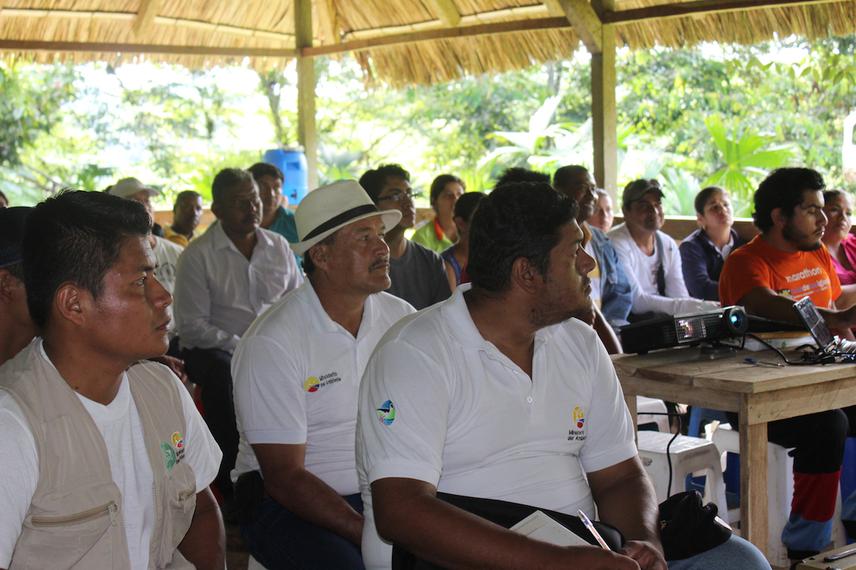Monica Gonzalez
This project provides local residents in a conservation hotspot with the information, technical capacity and planning framework they need to conserve rainforest habitat and associated biodiversity. The project site is the Mache-Chindul Reserve (MCR) in northwest Ecuador, a global priority for conservation whose human population lacks viable alternatives to deforestation.

This project provides local residents in a conservation hotspot with the information, technical capacity and planning framework they need to conserve rainforest habitat and associated biodiversity. The project site is the Mache-Chindul Reserve (MCR) in northwest Ecuador, a global priority for conservation whose human population lacks viable alternatives to deforestation.
We will focus conservation efforts on isolated patches of forest (i.e., ‘fragments’) within and around MCR, and the exceptional biodiversity they support. The Ecuadorian capuchin Cebus aequatorialis, an IUCN Critically Endangered primate, is the flagship species for this project because its conservation will protect many other species and it has widespread appeal. MCR has repeatedly been identified as a key stronghold and conservation priority for Ecuadorian capuchins, but within the reserve the species is restricted to one mid-sized area of continuous forest and a series of isolated forest fragments at imminent risk of being cleared.
Specific objectives are to:
Research.
Highly trained local resident researchers will conduct field research, with technical assistance on study design, analysis, and interpretation provided by PhD level collaborators. We propose to survey 35 fragments using standard transect, opportunistic, and camera trap methods, yielding a total of 60 fragments surveyed. When the species is detected, we will document group size, age structure, and density. Using remote sensing and ground truthing, we will also quantify habitat quality, fragment size, and degree of isolation.
Share results.
We will share results and promote conservation management and planning in MCR via 3, one-day workshops for local residents and the Ministry of the Environment We will develop a ‘best practices’ document for Ecuadorian capuchin management, to serve as a foundation for future planning and management efforts. We will openly share results with other conservation groups throughout the project. At the local community level, we will promote appreciation and conservation and discourage hunting among local residents via:
(1) 4 day-long ‘teacher training’ sessions, in which we build capacity of teachers to focus on these themes in their classrooms, with each workshop reaching 31 teachers, serving 800 children from 15 communities;
(2) 12 presentations given by local resident researchers to local communities and fragment owners, reaching 1,000 adults from 15 communities;
(3) 1 Environmental Fair reaching 1,500 local residents from 20 communities.
Reforestation.
We will reforest 24 ha to expand and connect 4 ‘priority’ forest fragments with neighbouring fragments, doubling the area of available habitat for these groups and providing connectivity among currently isolated populations. This objective builds upon reforestation work completed in 2014, when we planted 12,000 saplings on 34 farms in MCR.